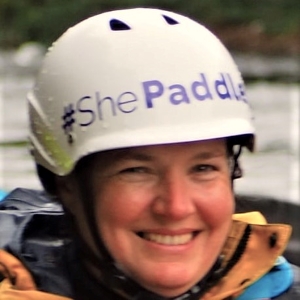Effective Forward Paddling for Canoe, Kayak or SUP
Good forward paddling is a core foundation of paddling for all disciplines. Here are steps and strokes for effective forward paddling technique.
The process:
• Paddle held shoulder-width apart.
• Good connectively with the canoe, kayak, or SUP with footpegs adjusted (kayaks) and good foot position (canoes and SUP’s).
• Developing torso rotation throughout the stroke accessing the bigger shoulder and back muscles.
• Strong catch in front of you anchoring the paddle’s blade in the water by sinking the blade and pulling/pushing the craft past the paddle. This is sometimes described as ‘sticking the paddle into the mud’ or ‘spearing a fish’.
• Efficient stroke with power (engagement of the blade) and suitable cadence (speed).
• When the paddle reaches your hip then the power phase of the stroke is turn.
• A more vertical paddle stroke encourages the craft to move forward, whereas a wider stroke (away from the craft encourages turning). In a canoe or SUP, this means stacked hands (one above the other) again encouraging rotation and increasing the forward element of the stroke.
• Imagining a box of eggs in your arms is a good visual tool, so you don’t break the eggs means paddling with your arms almost straight and away from your torso.
These are skills we can hone and perfect. In a kayak (which has a double-ended paddle) things are slightly easier with the paddler applying equal power (ideally) to the left and right side to paddle a straight course. Depending on the length of the waterline and rocker (banana shape) of the kayak or canoe this will be more or less easy. On a stand-up paddle board (SUP) the tracking (forward glide) governed by the length of the board, its width, and the size of the skeg(fin).
In canoes developing good forward paddling as a solo canoeist is a holy grail with ‘goon stokes’ and ‘J stokes’ to power the boat forward, A few pointers to help you are detailed further below on these two strokes.
Top tip – In difficult conditions, you may wish to lower your paddling stroke from vertical to more horizontal to allow more support from the water.
Handy Hint: Try wearing a peaked cap with the visor lowered to help you sit up with your head up in the canoe or kayak (to see below the peak) and improve your paddling posture.
Back Paddling
Back Paddling is obviously the reverse of forward paddling. The paddler reaches behind their bottom and pushes the paddle towards the front of the craft. It can be used to reverse or stop the craft.
• Good practice is to look behind you every 2 or 4 strokes to make sure you don’t hit something. In a solo canoe or SUP.
• When soloing (SUP or canoe) reverse strokes on one side will create a turning effect like spinning around a post
• Ideally with kayaks and tandem canoes you should be able to stop within 3 paddle strokes.
 Sophie (Fun 4 Young People)
Sophie (Fun 4 Young People) Michael (Goldington Academy)
Michael (Goldington Academy) Gemma
Gemma Matthew
Matthew










